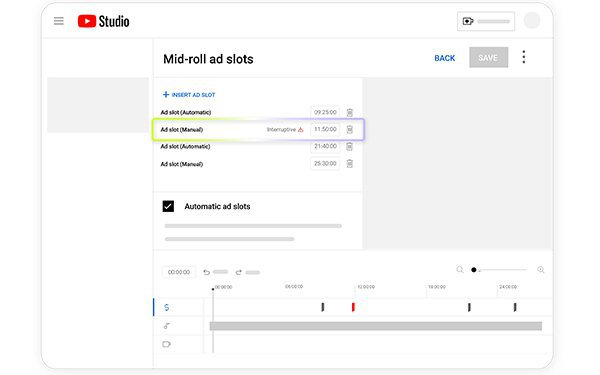
YouTube is upping the stakes in looking more
like TV where advertising commercials appear in more natural breaks for its mid-roll messaging -- offering up fewer ads in "interruptive" places.
What else does it need to do? Perhaps give
advertisers and brands more choice about where their messaging goes?
For linear TV networks, putting ads in easy, natural breaks has been the model for decades. That means running an and when
a typical scene ends and a new one begins.
YouTube will allow creators to use new technology to sense where there are natural breaks in the dialogue -- or we are guessing, the action.
In early tests, certain content providers realized 5% more revenue from advertisers that are
seemingly paying more for this opportunity.
advertisement
advertisement
The jolt of those YouTube interruptive messages -- appearing out of nowhere -- is surely causing much confusion or even damage in the initial
moments to the viewer, as well as a brand’s engagement expectations.
At the same time, interruptions have been more normalized over the years on the user-generated video service --
especially when it comes to less-professional looking user-generated content.
With the new approach, creators can opt out of letting YouTube place slots for them in the "earn" tab in YouTube
Studio. YouTube adds that “videos with interruptive mid-roll ad slots may earn less revenue” after the May change.”
The company says it is also inserting "additional,
automatic ad-slots at natural break points" into older videos with manually placed slots -- a change that creators can opt out of.
YouTube has the final say. If creators decide where to run
the advertising, that may mean the advertising doesn’t run at all. And that means less money coming to creators.
In 2023, a different change was made for those pre-and post-roll
advertising positions. This took away creators’ ability to choose when ads are skippable for those time slots.
The ad-share arrangement between YouTube and its creators is basically a
partnership. But now with YouTube in more control -- closer to mainstream, linear TV networks.
The advertisers don’t get to choose much -- although they can do so in their own
content.
What's the next step for YouTube? To not only grow in usage, but grow with brands big and small?